The devil's to Pay: The First Day at Gettysburg
The Devil’s To Pay
The First Day at Gettysburg
Review by Mitch Freedman:
There’s a lot of interesting stuff in this small box, but first a disclaimer. I know the designer, we have played many games together. When urged, he drinks my beer and eats my pretzels.
Now that you know that, let’s look at this game. But, even before that, let’s look at Gettysburg, arguably the most important single battle of the Civil War.
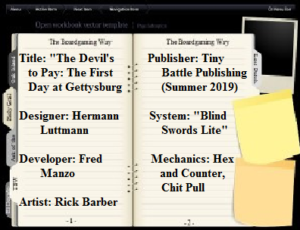 Of course, you could say that about many battles. Antietam comes to mind, and so does Sherman’s destruction of Atlanta and his subsequent march across Georgia. Oh, heck, everyone should be able to come up with a favorite of their own.
Of course, you could say that about many battles. Antietam comes to mind, and so does Sherman’s destruction of Atlanta and his subsequent march across Georgia. Oh, heck, everyone should be able to come up with a favorite of their own.
But, regardless, Gettysburg holds a special place.
Pick a dozen people at random and ask them to name a Civil War battle, and Gettysburg will likely be the one most often mentioned. More than 30,000 books have been written about the battle. If that’s not enough, just one question – did President Lincoln go anywhere else to dedicate a cemetery?
I’m hooked too. I have more books about Gettysburg than any other single battle and more books about the Civil War than any other war. Which is a sneaky way of saying this game isn’t really for beginners who want a simple game to play as an introduction to wargaming.
But, you often get what you pay for, or – in this case – the enjoyment you get from a game is directly tied to just how much time and effort you spend playing it.
Which raises a second question. Just how did Luttmann get so much good stuff in such a little box?
Well, for one thing, he uses his “Blind Sword” system. If you played it before, pay attention because he has modified it a bit. If you haven’t, a brief explanation:
Each side has eight command chits that let you attack or defend or maneuver or regain morale, or do something nasty to the other side like misplaced orders or sending one of their units a hex away from the battle.
The Union player picks two of them, and so does the Confederate. Those chits go into a cup, and – with the chits face down – each player picks two more and puts them in the cup. Then, halfway through the game, there are some nasty “Friction of War” chits that, when you pull them, effect the next chit drawn.
Since the chits are all drawn blindly, you never know which side will be affected. And, he’s added a new wrinkle. If you draw a chit you can’t or don’t want to hold or use this turn, you can immediately declare it a “Default Event,” which lets a single unit move one hex or shoot.
So, there is a lot of unpredictability in this game. The rulebook says it shows just how difficult it is to deal with changing battlefield conditions. Sometimes, you don’t get the order you need when you need it.
There is also a lot of uncertainty in the combat resolution. That’s another thing – you roll two dice (black and white) only the numbers you get aren’t 2-12. They are 11 to 66, which gives players a lot more shading of probable results. And as all good commanders know, you can’t just shoot at things. The combat results table has a lot of ways to shift columns, which can be very good for you or very bad.
It reminds you that it’s always a good idea to know what you are doing before you shoot, and when to take cover.
Now many units start fresh, and combat will quickly get them battle-worn, which makes it more likely they will break. First, a unit is shaken, then it breaks.
You get victory points for enemy units you have broken. Good to know, especially if you are playing solitaire and don’t want to risk losing to yourself by continuing to battle for some terrain that might give you just one or two victory points.
Broken units from both sides go into an off-board pool and roll each turn to see if they get back in the game. Of course, even if they do, it may be too late to be much help, but at least you are denying the enemy some victory points.
Ah, strategy.
The first couple of times I played this game, I was wed to the rules book since everything I did seemed to involve one change or another that I didn’t expect. After a while, it got smoother, and I really liked the way it worked. But, to be honest, I still have to keep checking every now and then.
Like I said before, you get what you pay for. Put in the work, and you’re playing a fascinating game.
Which gets us to the last interesting part in this game for me – the victory conditions.
Now, in a nutshell, the first day of the Battle of Gettysburg was just a skirmish. Robert E. Lee was marching out of Virginia in a desperate effort to show England and France that the South could fight outside its borders and deserved their help in breaking free of the Union. His army was the final hope of a Confederacy that was getting weaker and weaker, and the rich Pennsylvania farmland was a bonus to his hungry and poorly-supplied troops.
Besides, they had just smashed a Union army Chancellorsville. There would never be a better time to make this last, desperate effort.
Meanwhile, George Meade’s Army of the Potomac was searching for the elusive Lee, and some of the outnumbered scouts from his army encountered some of Lee’s troops. They were chased through the narrow streets of Gettysburg, which gave Lee a taste of victory.
The biggest part of the battle would come over the next two days. But, the first day set the table. There were big questions to be answered, and the early skirmish was the starting point.
Could Lee bring together his nearly 75,000 scattered troops and launch a coordinated attack? Where would they assemble? Where would they attack a stronger enemy which was defending on hills and in woods and mostly on higher ground?
How much time would Meade get to set up defenses, and where could he move his vast but stretched-out resources to make an effective fight. The two corps that were thrown into the initial battle weren’t enough to stop Lee, but did they give Meade enough time to set up his defenses and get the 100,000 soldiers he commanded where they had to be placed?
And if Meade’s Army broke, as it had broken before, what was left to stop Lee from burning down Washington, D.C.?
So, how as Luttmann dealt with those big issues during the important first day of the battle? Two ways, actually. He followed the record on reinforcements for both sides. They come in, pretty much in the same place and at the real-time showed up during the real battle. And he sets terrain objectives for his scenarios, which are a little hard to spot on the multi-shaded green map, at least until you realize each is marked by a small orange circle.
Now Mrs. Schulz Farm or the Almshouse or the Rock Creek Bridge – all spots that give victory points – aren’t nearly as important or as famous as Little Round Top or Devil’s Den, but they were important on that first day. Very important for the soldiers who fought over them.
We can argue over how important those objectives really were, or how many points should be given to them. But in most cases, there is no real answer. Unless, of course, it is just one bridge too far.
But, while there may be no final agreement on how to value a road or a bridge or a hill in a fast-flowing battle – war is really difficult to quantify – you could look at it another way. Adjusting those victory points a bit is a really easy way of balancing the game if one player is a novice or just weaker than the other. Give them something easier to take, or easier to hold.
The Devil’s To Pay runs 12 turns – shorter if either side scores an instant victory – but it also has a four turn tutorial scenario which I really recommend, especially to players not familiar with the Blind Swords system.
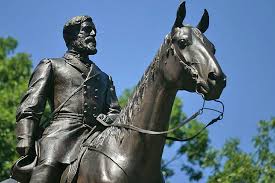 And, that instant victory is a fine way to end this review. It sits there for the Confederates like an elusive diamond glowing on the green map board. Just grab and hold one single hex on Cemetery Hill, just one. The Union player has to hold two roads on the enemy’s side of the map.
And, that instant victory is a fine way to end this review. It sits there for the Confederates like an elusive diamond glowing on the green map board. Just grab and hold one single hex on Cemetery Hill, just one. The Union player has to hold two roads on the enemy’s side of the map.
It doesn’t hold a candle. Two roads, feh. But the glory of charging across a field and taking the high ground…well, just ask Pickett what he thought. or, on second thought, don’t.
Game Resources:
Tiny Battle Home Page
Boardgamegeek Home page


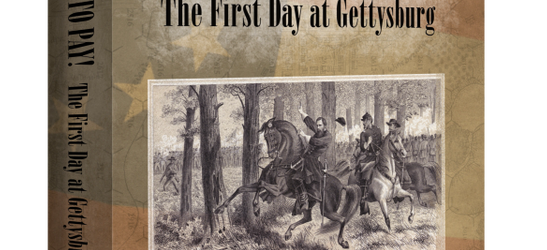
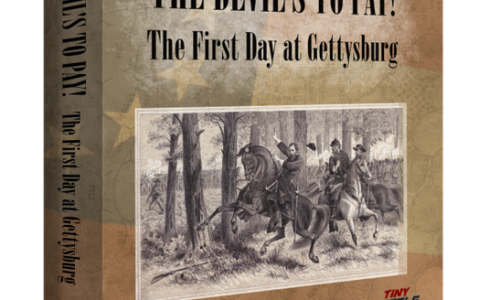
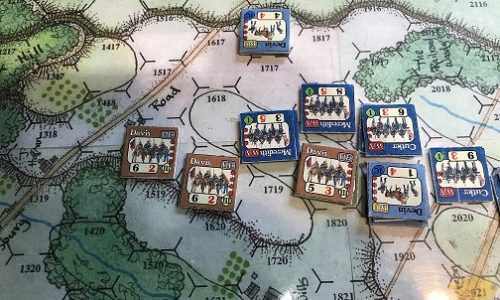
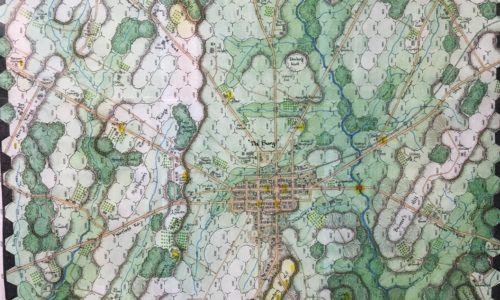
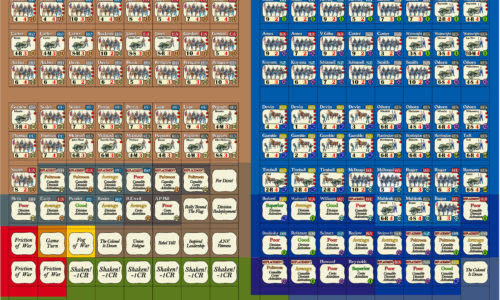
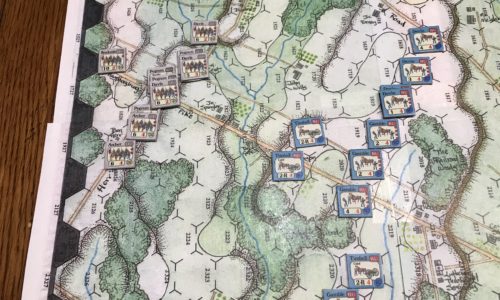
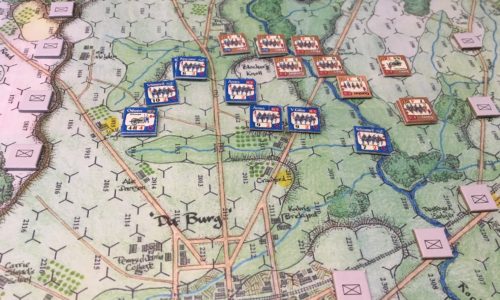
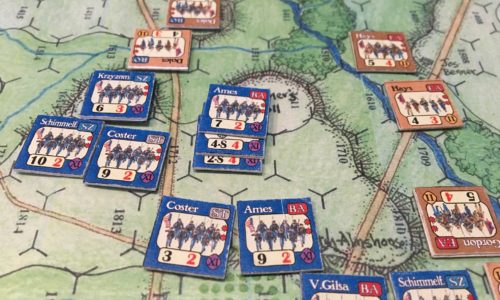
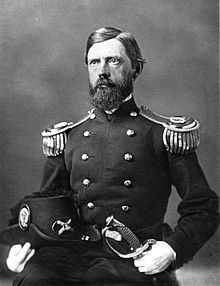






Excellent review! I just spent the best ‘weather weekend’ of the entire year down on the actual ground with Dave Powell and most of the Blind Swords playtesting team, and I’m already working on the ‘The Enemy is There!, which is the Southern Expansion which will add in the rest of the field and OOB to play the full battle of Gettysburg.
Extensive ‘field checking’, with some of the finest ACW folks there are!